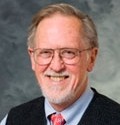27 Sep Electronic Health Records Not Adaptive To Patient-Centered Primary Care
MedicalResearch.com Interview with:
 Talley Holman, PhD, MBA
Talley Holman, PhD, MBA
Senior eHealth Systems Analyst, Practice Advancement
American Academy of Family Physicians
Leawood, KS 66211 and
 John Beasley MD
John Beasley MD
Professor of Family Medicine
School of Medicine and Public Health and the
Department of Industrial and Systems Engineering
University of Wisconsin Madison, WI
Medical Research: What is the background for this study?
Dr. Holman: From an engineering standpoint, tools such as EHRs are designed based on objectives, and the workflows that are created are developed to achieve those objectives. In health care, workflows have not been well understood, so designers have made assumptions when pressed to create tools to address specific situations, problems, or issues. However, the effectiveness of many of these tools is lacking, based on feedback. This led us to take a step back and ask if there is a standard workflow, and if so, what is it?
Dr. Beasley: Physicians (and staff) have noted that the EHR is not doing a good job of supporting their work – and changes are made that appear to disrupt the physician’s workflow. There appears to have been an assumption on the part of designers/implementers that workflow is linear.
Medical Research: What are the main findings?
Dr. Holman: There are two main findings.
The primary finding is that there is no standardized workflow in a primary care visit. Hence, the workflow is not linear and there is not a specific map of tasks to get from the start of the visit to the end for each patient. The workflow is adaptive to the patient, which is essentially physicians practicing patient-centered care. The physician does what is needed for each patient based on the current objective.
A secondary finding, which I think is very important moving forward with tool and workplace designs, is that the physician never stops collecting information from the patient. Even at the end of the visit, collecting information from the patient is still 1/3 of all task performed, so we need to support that as designers.
Dr. Beasley: Workflow is non-linear as long as physicians are patient-responsive. What we do in terms of addressing tasks is not predictable.
Medical Research: What should clinicians and patients take away from your report?
Dr. Holman: The first thing is that we are listening and trying to describe the day to day work that happens in primary care so it can be properly supported. More research is needed and that means support and resources, which includes clinicians and patients being active or open to working with teams that are looking to improve primary care. This work cannot happen in a vacuum and be done by one or two people. It requires collaboration between designers, scientists, engineers, doctors, and organizations at all levels.
Dr. Beasley: We need to be intelligent when designing systems and technologies so that they support the non-linear and unpredictable workflow inherent in patient-centered care.
Medical Research: What recommendations do you have for future research as a result of this study?
Dr. Holman: We need systems and tools in health care that are designed to be adaptive. Generally, systems and tools should support a physicians’ workflow, not dictate it. In order to design systems and tools such as this, we need to further understand the workflow. While the workflow of a visit may not be standardized from beginning to end, there are things that can be standardized within it, such as some individual procedures. The question is, which ones can be standardized without losing focus on the primary goal of improving the quality of health care?
Dr. Beasley: There is a huge need to have proposed interventions and technologies be based in the realities of clinical care. Furthermore, when innovations are introduced (e.g. EHRs, BPSs CDS) there has to be an in-depth evaluation of their effectiveness and potential adverse effects (e.g. forcing non-patient centered workflow onto the clinician) .
Citation:
J Am Med Inform Assoc. 2015 Sep 2. pii: ocv107. doi: 10.1093/jamia/ocv107. [Epub ahead of print]
The myth of standardized workflow in primary care.
Holman GT1, Beasley JW2, Karsh BT3, Stone JA4, Smith PD5, Wetterneck TB6.
[wysija_form id=”5″]
MedicalResearch.com is not a forum for the exchange of personal medical information, advice or the promotion of self-destructive behavior (e.g., eating disorders, suicide). While you may freely discuss your troubles, you should not look to the Website for information or advice on such topics. Instead, we recommend that you talk in person with a trusted medical professional.
The information on MedicalResearch.com is provided for educational purposes only, and is in no way intended to diagnose, cure, or treat any medical or other condition. Always seek the advice of your physician or other qualified health and ask your doctor any questions you may have regarding a medical condition. In addition to all other limitations and disclaimers in this agreement, service provider and its third party providers disclaim any liability or loss in connection with the content provided on this website.
Talley Holman, PhD, MBA and John Beasley MD (2015). Electronic Health Records Not Adaptive To Patient-Centered Primary Care
Last Updated on September 27, 2015 by Marie Benz MD FAAD
